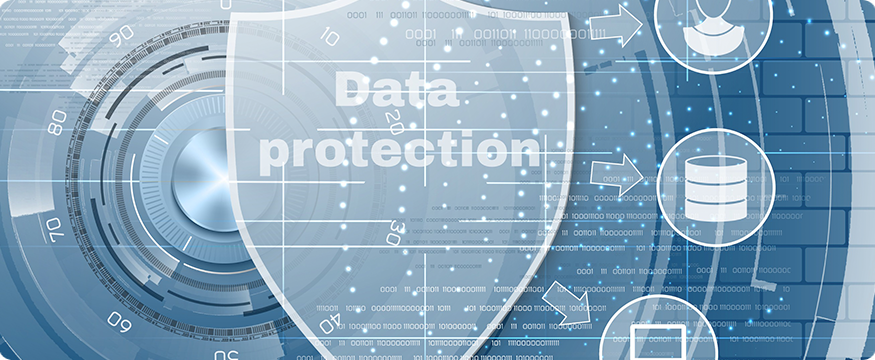Key Takeaways
- Zero trust architecture is a security model that eliminates default trust for users and devices within the network perimeter, reducing the likelihood of a breach.
- It enables easier and more consistent enforcement of security policies compared to legacy technology like VPNs, reducing costs and complexity.
- Zero trust architecture focuses on least-privileged access, aligning network segmentation, integrating protections with application workflows, and adopting a data-centric approach to cybersecurity.
- DH2i’s technology ensures near zero downtime and zero trust architecture for securely connecting and failing over enterprise applications. It helps simplify clustering of SQL Server on Linux, Windows, and containers, enabling organizations to achieve maximum performance and ROI.

The Core Principle of Zero Trust Architecture
The key guiding principle to implementing zero trust architecture is to ‘never trust, always verify’. This is the foundation of the zero trust security model. Each component, from users, devices, applications, and networks, isn’t inherently trusted. Instead, they’re continually validated to ensure they meet the zero trust security standards.
This process of constant verification is facilitated by zero trust network access, which allows only authenticated and authorized users and devices to access applications and data.

Advantages and Challenges of Implementing Zero Trust Architecture
Implementing zero trust architecture can offer significant advantages. Enhanced security benefits include protection against both external and internal threats, minimizing the attack surface, reducing the risk of data breaches, and improving visibility and control over the network.
However, it’s important to also consider the potential challenges that might arise. Deployment issues such as complexity, cost, and time can be significant. Understanding and implementing the zero trust architecture adoption strategies effectively is crucial to overcome these challenges. Adapting to this new zero trust security model requires a shift in mindset and may require additional training as well.
Features and Functionalities of Zero Trust Architecture
In your journey to understand zero trust architecture, you’ll find that it boasts key features and functionalities that significantly bolster the security of any network.
Zero trust architecture features include:
- Granular application-level user access policies that reduce breach likelihood by restricting lateral movement.
- More straightforward and consistent security policy enforcement.
- Continuous verification of traffic internal and external to the network
Zero trust architecture functionality further provides the benefit of: quick, effective response and recovery from breaches, and a reduction in cost and complexity by eliminating VPNs and complex network perimeter firewall policies.
However, like any system, zero trust architecture carries both benefits and risks. The main advantage is robust security, but it requires a carefully created deployment strategy and skillful implementation to avoid potential risks.

Exploring the Role of Zero Trust in Multi-Cloud Architecture
Zero trust plays an especially pivotal role in securing multi-cloud architectures. It addresses multi-cloud benefits such as flexibility and cost-efficiency while tackling security challenges head-on.
A key feature of zero trust is its scalability considerations. As your network expands, zero trust safeguards every new connection, ensuring your security posture is never compromised.
To effectively implement zero trust strategies, consider granting least privilege access and enforcing strict identity verification. You’ll also want to use micro-segmentation to isolate workloads and limit lateral movement.
Following these best practices will fortify your multi-cloud environment. So, whether you’re already utilizing multi-cloud or just considering it, remember: zero trust isn’t just an option, it’s a necessity in your security strategy.
The Journey Towards Zero Trust Architecture
You’re embarking on a journey to zero trust adoption, and it’s critical to understand that shifting towards a zero trust architecture isn’t an overnight process. The journey to zero trust carries challenges, but understanding zero trust principles can help ease the transition.
DH2i software adoption is a significant step in this journey. Their high availability clustering and software-defined perimeter technology could be vital in your zero trust implementation strategies.
Remember, the journey towards zero trust is about rethinking old paradigms around identity and access management and creating a new security framework. It’s not just about technology; it’s a shift in philosophy.
With patience and the right tools, the road to a zero trust architecture can be a journey worth undertaking.
Conclusion
Zero trust architecture isn’t just a buzzword, it’s a necessity in our digital age.
It’s a game-changer, offering robust, versatile solutions to cybersecurity challenges.
With its core components like identity and device management, network segmentation, and data-centric approach, it revolutionizes traditional security models.
Embracing a zero trust architecture isn’t a walk in the park, but its advantages outweigh the challenges.
Embrace a Zero Trust Architecture and integrate solutions like DxOdyssey Software-Defined Perimeter to secure your organization.

Jump to Topic
FAQ
Google’s BeyondCorp is a well-known example. They’ve reaped zero trust benefits like better security and increased scalability.
Microsoft also adopted this approach, evolving their traditional network security to a zero trust model.
You might face several challenges when implementing new security measures. Cost implications are a primary concern, as the transition can be expensive.
Implementation can be complex, posing technical compatibility issues. Organizational readiness is crucial, as employees must adapt to new systems.
Policy enforcement, too, can be challenging, ensuring all adhere to new protocols.
In essence, zero trust technology enhances security by integrating seamlessly with existing infrastructure and systems to help your organization establish a smooth framework of operations and a comprehensive defense strategy. It represents a significant step in cybersecurity evolution, positioning zero trust as a vital component of modern cyber defense strategies.
To implement and manage any new framework, you’ll need proper training and skill enhancement. For ‘trust verification’ and ‘zero trust implementation’, understanding the principles and practices is crucial. Professional training courses are available to help you grasp this knowledge.
Additionally, resource allocation is key – making sure you have the right people, with the right skills, in the right roles.
It’s a substantial undertaking, but with the right preparation, you can make it happen.
When considering how access and usability impact your user experience, you’ll find that zero trust architecture enhances both.
It uses advanced access control and user authentication, which boosts security measures while maintaining user privacy.
Despite these improvements, usability isn’t compromised. Instead, it’s enhanced, ensuring you can access necessary resources easily and securely.
